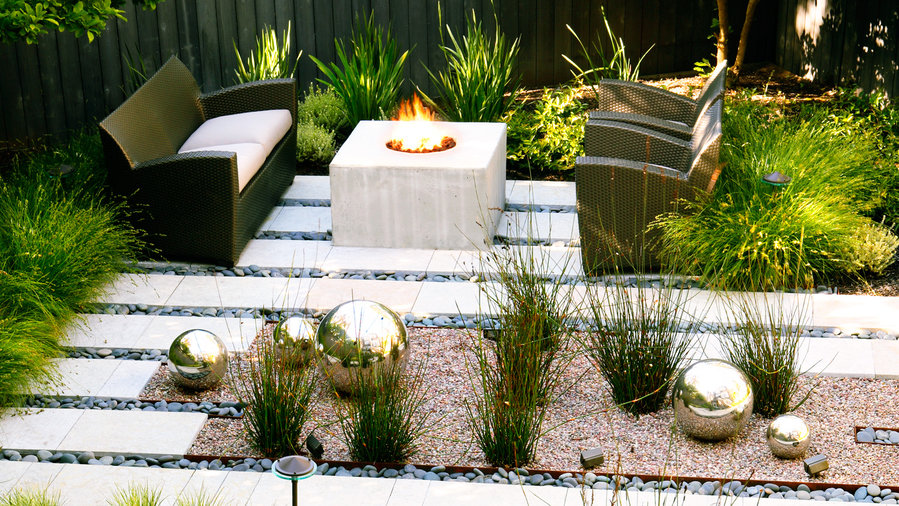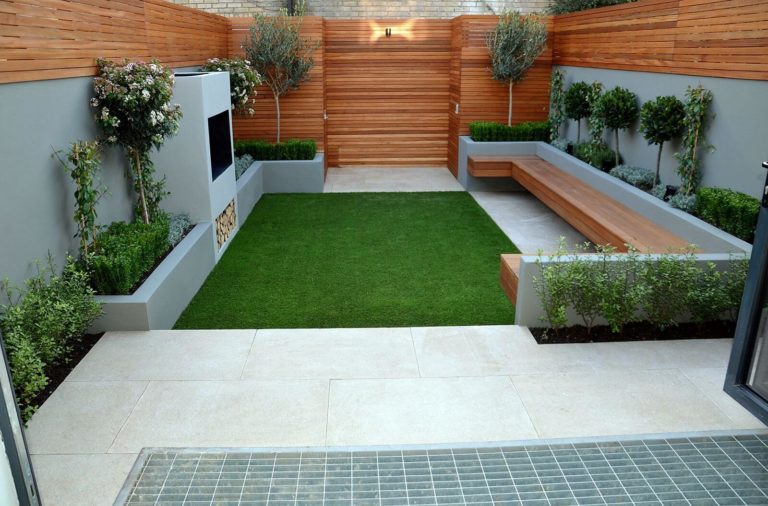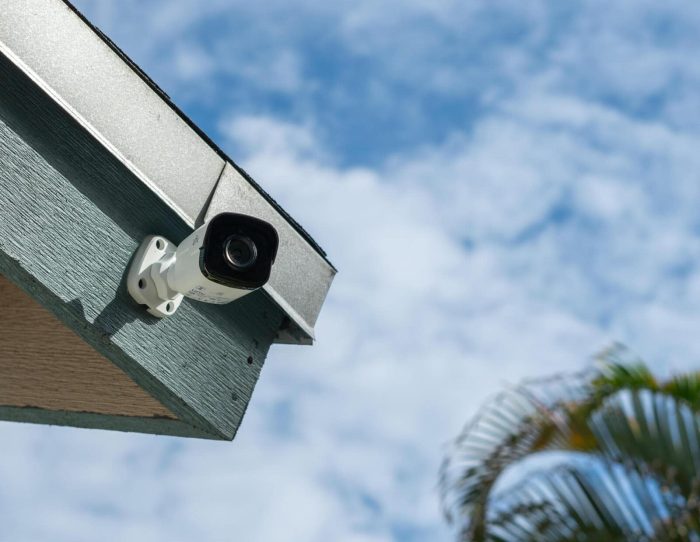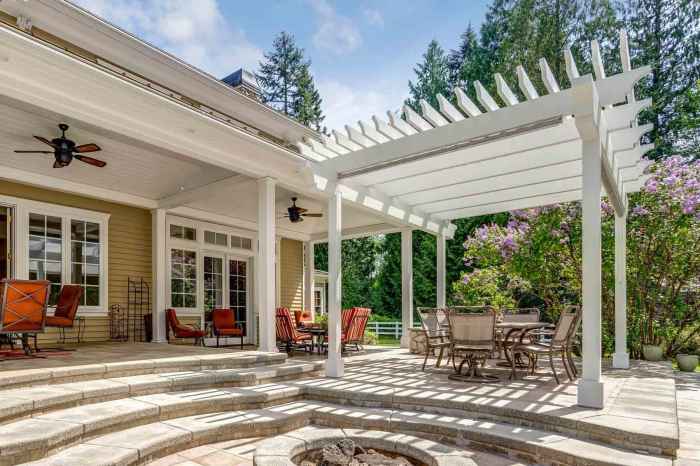Modern landscape design tips for small spaces: Creating Stunning Outdoor Spaces
Modern landscape design tips for small spaces set the stage for creating breathtaking outdoor areas that are both stylish and functional. From maximizing space to selecting the perfect greenery, this guide delves into the essentials of modern landscape design for small spaces with a focus on innovation and creativity.
As we explore the key elements and principles of modern landscape design, you'll discover how to transform your compact outdoor space into a modern oasis that reflects your unique style and personality.
Understanding Modern Landscape Design

Modern landscape design in the context of small spaces focuses on creating sleek, minimalist outdoor areas that are both functional and visually appealing. This design style often incorporates clean lines, geometric shapes, and a balance between hardscape and softscape elements.
Key Elements of Modern Landscape Design
- Minimalism: Modern landscape design emphasizes simplicity and clean lines to create a sleek and uncluttered outdoor space.
- Use of Technology: Incorporating smart irrigation systems, outdoor lighting, and sustainable materials are common in modern landscape design.
- Outdoor Rooms: Dividing the outdoor space into functional areas such as lounging, dining, and cooking spaces to maximize usability.
- Sustainable Practices: Using native plants, drought-resistant landscaping, and eco-friendly materials to create a sustainable and environmentally friendly outdoor space.
Importance of Incorporating Modern Design Principles in Small Outdoor Areas
Modern design principles are essential in small outdoor spaces to maximize functionality and aesthetic appeal. By embracing modern landscape design, small yards or patios can appear larger and more inviting. The clean lines and minimalistic approach can create a sense of openness and tranquility, making the outdoor area a relaxing retreat.
Maximizing Space in Small Landscapes
When dealing with limited outdoor space, it's essential to utilize every inch efficiently to create a functional and visually appealing landscape. Here are some tips on how to maximize space in small landscapes.
Vertical Gardening
Vertical gardening is a technique that involves growing plants upwards rather than outwards, making it perfect for small spaces. By utilizing walls, fences, or trellises, you can create a lush green oasis without sacrificing valuable floor space. This method not only adds a decorative element but also helps in maximizing the available area for planting.
Multifunctional Furniture and Structures
Incorporating multifunctional furniture and structures is key to optimizing space in small landscapes. For example, a bench with built-in storage can serve as seating while providing a place to store gardening tools or cushions. Similarly, a pergola can act as a shade structure for outdoor dining or as a support for climbing plants, adding both functionality and aesthetic value to the space.
Incorporating Greenery and Plant Selection

When it comes to modern landscape design in small spaces, incorporating greenery and selecting the right plants is crucial to achieving a balanced and visually appealing outdoor space. By carefully choosing plants that complement the modern aesthetic while thriving in limited space, you can create a vibrant and inviting environment.
Selecting Plants Suitable for Modern Small Space Landscapes
- Opt for plants with a compact growth habit to maximize space without overcrowding.
- Choose plants with interesting textures, colors, and shapes to add visual interest to the landscape.
- Consider using vertical planters or hanging plants to utilize vertical space and create a lush green backdrop.
Use of Native Plants and Their Benefits in Small Gardens
- Native plants are well-adapted to the local climate and soil conditions, making them low-maintenance and sustainable choices for small gardens.
- By incorporating native plants, you can attract local wildlife such as birds and butterflies, adding to the biodiversity of your outdoor space.
- Native plants require less water and fertilizer, making them eco-friendly and cost-effective options for modern small space landscapes.
Ideas for Incorporating Greenery While Maintaining a Modern Aesthetic
- Create a green wall using a combination of climbing plants and vertical planters to add a touch of nature to a modern outdoor space.
- Integrate evergreen plants with clean, architectural lines to enhance the contemporary look of the landscape.
- Add pops of color with flowering plants or ornamental grasses to create focal points and soften hard surfaces in a modern small space garden.
Utilizing Hardscaping Elements
When it comes to modern landscape design for small spaces, hardscaping elements play a crucial role in creating structure, defining areas, and adding visual interest to the outdoor space.
Materials in Hardscaping
- Concrete: Concrete is a versatile material that can be used for paths, patios, and retaining walls. It provides a modern and clean aesthetic to the landscape.
- Wood: Wood is a warm and natural material that can be used for decks, fences, and pergolas. It adds a touch of warmth and texture to the overall design.
- Metal: Metal elements like steel edging, sculptures, or furniture can add a contemporary and sleek look to the landscape design.
Integrating Hardscaping Features
Integrating hardscaping features such as pathways, decks, and patios can help maximize space and create functional areas within a small landscape.
- Pathways: Use pathways to connect different areas of the garden and guide visitors through the space. Consider using materials like gravel, pavers, or stepping stones for a modern look.
- Decks: A deck can provide a designated outdoor living area for seating, dining, or relaxation. Opt for sleek, minimalist designs to complement the modern landscape.
- Patios: Patios are perfect for outdoor entertaining or creating a cozy seating area. Choose materials that coordinate with the overall design theme and incorporate greenery for a harmonious blend of softscape and hardscape elements.
Closing Notes

In conclusion, modern landscape design for small spaces offers endless possibilities for transforming even the tiniest outdoor areas into stunning retreats. By incorporating modern design principles, maximizing space, selecting the right plants, and utilizing hardscaping elements, you can create a small outdoor space that is both visually appealing and functional.
Let your creativity flourish as you embark on your journey to redefine your outdoor living space with modern landscape design.
FAQ Insights
What are some key elements of modern landscape design for small spaces?
Key elements include clean lines, minimalistic design, strategic greenery placement, and functional hardscaping features.
How can I maximize space in a small landscape?
You can maximize space by using vertical gardening techniques, opting for multifunctional furniture, and strategically planning the layout.
Why is it important to incorporate modern design principles in small outdoor areas?
Incorporating modern design principles helps create a cohesive and visually appealing outdoor space that maximizes functionality and aesthetics.




